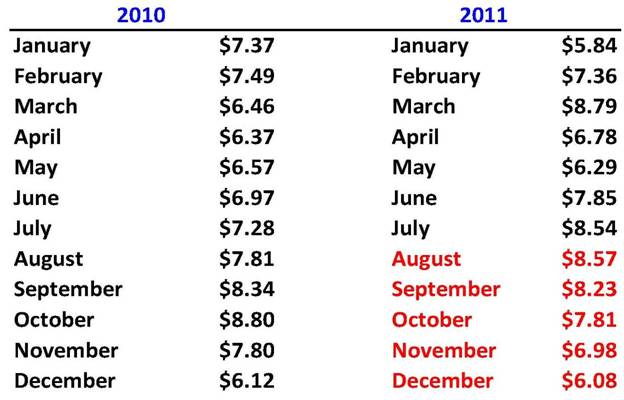Dispelling Rumors: Foundation for the Future’s Market Stabilization Plan Would Not Have Taken Effect During 2010, 2011

National Milk Producers Federation clarifies misconceptions that farm-level margins would have been tight enough in the past 18 months to activate the proposed Dairy Market Stabilization Program.
Source: NMPF news release
ARLINGTON, Va. – The market management element of the dairy legislative package being readied for introduction in Congress would not have been active in 2010 or 2011, according to the National Milk Producers Federation (NMPF), which helped develop the Foundation for the Future program on which the legislation is based.
NMPF made the announcement today to clarify misconceptions that farm-level margins would have been tight enough in the past 18 months to activate the proposed Dairy Market Stabilization Program (DMSP), one of three elements of NMPF’s Foundation for the Future program. The DMSP is intended to send quick market signals to dairy producers when milk prices drop, feed prices escalate, or the combination of those factors compresses the margins between milk and feed prices to the point where a severe imbalance has developed.
As originally drafted by NMPF, the DMSP’s calculation of margins used futures settlement prices found on the Chicago Mercantile Exchange (CME) for corn, soybeans and alfalfa hay. But under the legislative draft proposed by Rep. Collin Peterson (D-Minn.), and now also endorsed by Rep. Mike Simpson (R-Idaho), the DMSP margin calculation will use the feed costs reported by two USDA agencies -- the National Agricultural Statistics Service (NASS), and the Agricultural Marketing Service (AMS) -- in order to accommodate USDA reporting requirements for implementation of the program. NASS currently reports the average corn and alfalfa prices received by farmers in the U.S., and AMS currently reports soybean meal prices at seven specific locations within the U.S.
NASS corn price reports are generally lower than the prices used in the CME corn contract settlements, according to NMPF. During the period January 2009 through June 2011, for example, the NASS U.S. corn price averaged $0.41 per bu. lower than the CME-derived corn price. While using the AMS reports, instead of CME prices, for soybean meal would tend to have the opposite effect, the overall impact of using USDA’s NASS and AMS calculations of feed costs in 2010 and the first half of 2011 would have meant margins would have been wider under the legislative draft, and thus the Market Stabilization Program would not have been activated.
“The use of USDA feed price reports again demonstrates that the Dairy Market Stabilization Program will act only in those rare instances when margins are so bad that catastrophic losses of producer equity are at hand, as was the case in 2009,” said Neal Rea, a dairy producer from Cambridge, N.Y., and a member of the NMPF task force that developed the DMSP.
The chart below indicates what the margins would have been last year, and through the first seven months of this year, using the feed calculations as proposed in Peterson draft legislation. Current projections for prices in the remainder of 2011 are also included.
FFTF Milk Price-Feed Cost Margin
Actual Forecast
Because the Dairy Market Stabilization Program only activates when the margin between the All-Milk price and the feed cost calculation is $6 per cwt. or less for two consecutive months, at no point would farm-level milk or feed prices have triggered the program in 2010 or 2011.
To learn more about Foundation for the Future, including the Dairy Producer Margin Protection Program and the Dairy Market Stabilization Program, visit www.futurefordairy.com.







